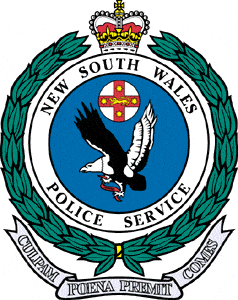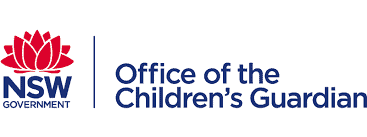What’s best – Team Development or Team Building? And what’s the difference?
What’s usually best are activities that enhance Team Development AND Team Building. However, there’s rarely a ‘single silver bullet solution’, so consider what’s best for your team…and of course time and budget limitations, which are the usual organisational constraints – which is why we very often advise activities that incorporate both Team Development and Team Building.
If you have limited budget and time (let’s face it, most organisations are in that boat!) then I’d recommend Team Development, ensuring there’s a good Team Building component-built in.
TEAM BUILDING
Team Building in most cases is generally about team bonding. Team Building primarily aims to improve interpersonal relationships, connection, and morale, and promoting a more harmonious team environment. It’s usually about informal activities and events designed to strengthen relationships and foster a sense of camaraderie among team members.
This can be as simple as getting people together for an informal lunch, or an experience team-type event like going bowling, doing an escape room, a quiz, doing Lego play, building the archetypal marshmallow bridge/tower, etc.
It ideally needs to be something that the vast majority of the team like doing, but then getting people out of their comfort zone can be part of the deal as well. That could be something simple like playing bongoes 🪘🥁, or something more challenging like MyAdventure Group 🧗♀️🏕️ can be awesome, depending on what you want to achieve. Choosing something that is inclusive for all team members is, of course, critical.
TEAM DEVELOPMENT
Team Development is generally an activity/activities that enhances team performance and productivity, and the collaboration, communication, trust and effectiveness and of a group.
The goal of Team Development is to develop a more effective, unified, productive, and collaborative team within an organisation.
Nearly all Team Development scenarios will also develop Team Building/bonding: improving relationships, connection and morale and promoting a more harmonious and collaborative team environment.
So if you’re looking for something that covers improving performance and productivity as well as connection and morale, then Team Development is usually what you need. However, make sure you do get both when you’re enquiring about something for your team, as it’s not always a given.
As with Team Building activities, choosing something that’s inclusive is critical. Getting people out of their Comfort Zones can also be useful – but not too far out of the zone!
The activity needs to be something that gets people in what we call The Learning Zone. When people are too far out of their Comfort Zones, they can land in The Panic Zone!
In The Panic Zone, people are just trying to survive: very little learning takes place as their pre-frontal cortex shuts down, and they’re trying simply to survive – and get back to the Comfort Zone as fast as possible!
In The Learning Zone, there’s a balance between there being enough discomfort to stretch people, but at a level where the pre-frontal cortex stays ‘open’ and capable of helping people learn from the experience. Then people’s Comfort Zones often expand.
As with Team Building, Team Development can significantly boost oxytocin, serotonin, and dopamine. The difference in Team Development programs is these feel-good neurotransmitters are usually more deeply reinforced, and the benefits of Team Development are much more likely to carried back to the workplace.
When to use Team Development
A few examples of when to use Team Development include (not exhaustive):
- When a team is working ok, but you want to boost productivity and effectiveness to a new level
- When the team is dysfunctional, and you need a reset
- When teams from different areas or organisations merge
- When there are a few cracks or niggles showing and you want to stop them becoming gaping fissures and destructive, unhealthy conflict
- When you’re looking to get a team working in a new/different environment of way of working e.g. moving from remote to hybrid working, or hybrid to more office-based
- When you want a good reason to bring a team together into the office e.g. get a hybrid team in one place together for something constructive
The last point is a particularly useful time to do Team Development as opposed to Team Building. People often want a purpose to coming into the office for a period, and a nice lunch on its own often simply doesn’t cut it!
If you have limited budget and time (let’s face it, most organisations are in that boat!) then I’d recommend Team Development, ensuring there’s a good Team Building component built in.
When to use Team Building?
A few examples of when to use Team Building include (not exhaustive):
- When the team need to decompress, de-stress and unwind
- When a team is new and don’t know each other
- When the team needs to celebrate, be that a milestone, achievement or simply celebrate for the sake of it
- When the team has been working very transactionally and there’s been little ‘human connection’ between them e.g. remote teams
- When there’s been a high percentage of turnover, and several new people are joining an established group
TEAM DEVELOPMENT
Our smart-phone-app-based Team Development program (run face-to-face) covers all elements of Team Development and Team Building…and more…in an inclusive, psychologically safe environment. It’s extremely inclusive and caters to all levels of ability, and very much keeps people in The Learning Zone.
We have an experienced Team Coach who observes teams working through a set of fun challenges teams follow on our smart-phone app. These are completed by uploading a photo or video, answering a question, or completing a group challenge, and teams have a lot of fun doing the challenges.
“I wanted to say a big THANK YOU for the tremendous team development day in January. People are still raving about it [2 months later]! So good! Thank you again – its most appreciated!” CEO, NSW/QLD-based organisation
We then debrief the challenges with a view to what people did well and what they can do better and how that relates to how the operate in the workplace. Teams then complete a second round of challenges where they apply the learning, and often see the difference in performance is like night & day compared to before. We then debrief that regarding what went well and what did they do differently, and how can they apply that back in the workplace. Individual then take responsibility to make their own actions plan that is taken back to the workplace.
The fact people apply the learning in the second round of challenges means they cement deeper learning pathways on the brain and are more likely to take the learning and actions back to the workplace.
We often also add in a simple, but incredibly effective ‘Get to Know Each Other’ exercise that book-ends the session to help people understand who they are as humans.
This is especially useful and effective for new teams or teams that have had new people joining in the past year or so, and/or for teams that have been working Hybrid and/or asynchronously and haven’t had a lot of team bonding time to get to know each other.
“Best team development and team building day I’ve ever done – and I’ve done a lot of these in the 15-20 or so years we’ve been doing them!” Director, NSW Government
TEAM BUILDING
Team Building can help the team get to know each other on a more human or deeper personal level, improve morale, especially if the team mood is somewhat sombre or there’s been a lot of stress in the workplace. Team building activities can provide a much-needed break and help uplift spirits.
Team Building is also often effective in enhancing communication and trust. If you notice communication barriers or a lack of trust among team members, informal and fun team building activities can break down these barriers and build trust.
After intense periods of work, such as completing a major project, team building can be an excellent way for the team to unwind and de-stress together.
When the team enjoys their activity [a ‘fun’ activity for some isn’t always ‘fun’ for everyone!], Team Building boosts oxytocin, serotonin and dopamine.
However, these feel-good neurotransmitters usually soon tail off if not reinforced, and the benefits of Team Building can very quickly disappear, especially in today’s super-busy, ‘overwhelmed, overworked and over it’ working environment that we see in many organisations. And often even more so in hybrid working teams when people are asynchronous and aren’t together back in the office to reinforce the ‘feel-goods’.
























































